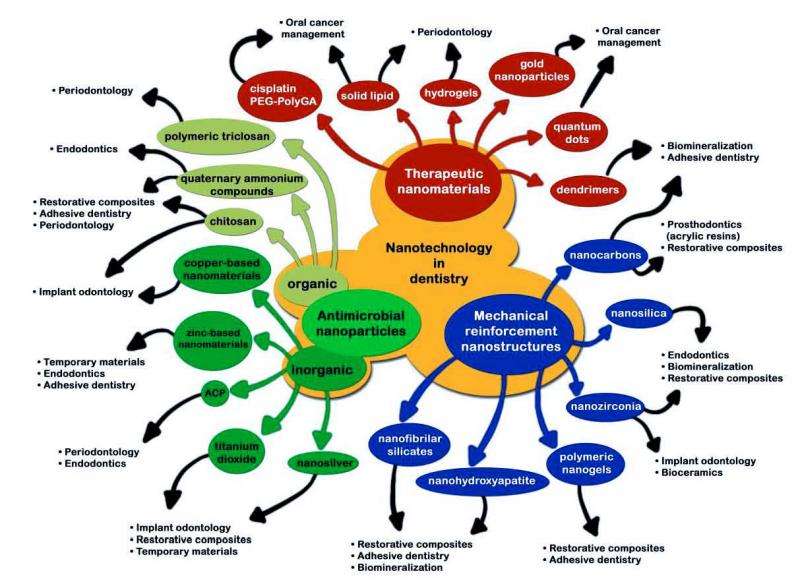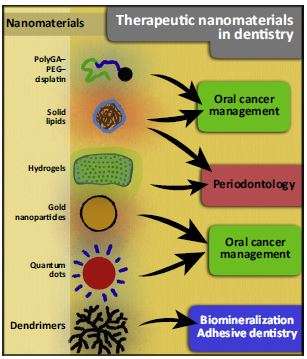Nanotechnology inspires next-generation dental materials

Have a cavity? Ask your dentist about filling it with a mixture of nanoparticles including silica and zirconia. These white fillings (known as nano-composite resins) resemble teeth better than their metal alternatives and are less likely to come loose or fracture teeth. This is just the beginning argue Brazilian scientists in a review of "nanodentistry," published October 19 in Trends in Biotechnology. Next-generation dental materials incorporating nanotechnology aim to help teeth self-heal, rebuild enamel, and protect against bacterial infections.
"Nanotechnology can be faced sometimes as a paradigm that promised a lot and delivered very little," says senior author Nelson Durán of the Universidade Estadual de Campinas. "The evolution of dental materials though nanotechnology is real and remarkable, reflecting on a billionaire market. In this way, dentistry was in fact one of the most benefited areas from the development of nanotechnology."
Since the introduction of nano-composite resins a decade ago, engineers have been exploring how else nanotechnology can safely be used in the dentist's office. Products could include antimicrobial adhesives made up of carbon nanotubes—creating a kind of wearable toothpaste—or quantum dots combined with cancer-specific antibodies that can be applied inside the mouth, emitting light if they detect any troublesome cells.
"The remineralization of enamel and dentin with the use of nanoparticles (incorporated in different vehicles), a key issue for improving the quality and longevity of resin restorations, is being currently investigated," says co-author Amauri Jardim de Paula of Universidade Federal do Ceará. "A future perspective is that nanoparticles incorporated in dental materials will prevent and/or control oral diseases through their long-term release and action."
Although nanodental technologies have evolved quickly, safety and cost will be barriers to getting them on the market. Some nanomaterials might be toxic to healthy cells, so any new nanomaterials to be used for dentistry would need formal pre-clinical and clinical trials before they can receive approval. Patients will also need to be told that a treatment will use materials in the nanometer size range and should be aware of any possible side effects. This new technology could also be expensive, and insurance companies may not want to foot the bill if treatments could be considered cosmetic; composite resins, for example, are still an out-of-pocket cost.
The review authors believe these hurdles can be overcome, however, and that new nanodental products should be available within a few years.

More information: Trends in Biotechnology, Padovania et al.: "Advances in dental materials through nanotechnology: facts, perspectives and toxicological aspects" dx.doi.org/10.1016/j.tibtech.2015.09.005
Journal information: Trends in Biotechnology
Provided by Cell Press


















